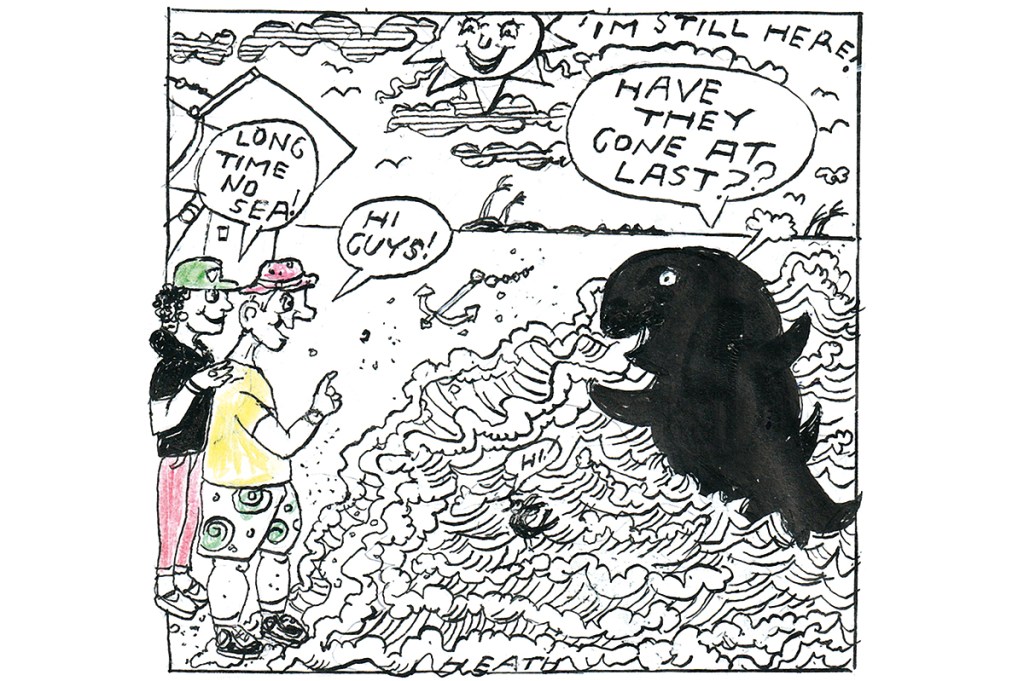On the roads in Amagansett, in the shops, at the train station, the summer crowds have vanished, and those of us who spend time here “off-season” sigh with relief. Until we drive down the most exclusive street in town, Further Lane. Then we – some of us at least – seethe over the loss of something we loved. Last winter, a person or persons operating under the moniker Further Lane Barn LLC, bought two contiguous lots totaling seven acres, stretching from Further Lane to the magnificent ocean dunes that front the wide, sandy beach that is the chief attraction of the gorgeous east end of Long Island. The price for land, house, and a couple of outbuildings? A cool $70 million. So far, so 21st century. Thanks to the vertiginous escalation in real-estate values out here, plenty of people now own properties worth ten times what they paid for them two decades ago.
But in acquiring the estate at 370/372 Further Lane, the owners became stewards of a rare thing – an open meadow stretching nearly the entire length of the double plot, 500 feet, which provided for passers-by a snapshot of how the Hamptons used to be: potato fields, dotted with wooden barns and modest farmhouses. Both neighbors and town officials objected immediately this spring when a holly hedge six feet high and three rows deep, along with half a dozen large trees, were installed to screen the street end of the property. At a hearing of the Architectural Review Board, it was pointed out that these plantings violated the terms of the estate’s creation, first amalgamating two lots in 1989. “This is a treasured view,” Chip Rae of the ARB proclaimed. “And the town folks have the right and the ability to preserve this.” The owner’s lawyer conceded that it was “bad timing” to install the vegetation peremptorily but expressed confidence that a loophole in the law could be found permitting the plantings to remain. Sad to say, this attorney is probably correct. For the moment, here – as on Martha’s Vineyard and Nantucket, also ocean-adjacent locales popular with the mega-wealthy – existing regulations are insufficient defense against the whims of those who can afford to build, and plant, whatever they damn well please.
Some family members feel my griping about this matter and, truth be told, numerous other matters (I am known to shout “Too big for the lot!” out the car window at a new house going up) is a cranky waste of energy. They fail to grasp that complaining about predations on paradise is a way of acknowledging you live within paradise’s precincts.
The poet John N. Morris called the light on this narrow spit of land, flanked on one side by Gardiner’s Bay and the other by the Atlantic, “clear as gin.” True, from early April through August. But now, in the fall, the light is like golden syrup. Rich, yellow shafts of sun cut through the silent stands of tall oaks and elms, the contrast between the white wave crests and the green ocean is deepened and the air has a polished blond sheen. It is, apparently, the heavy saturation of water molecules in our coastal atmosphere, catching and holding on to the light, which intensifies the effect of the sun’s autumnal angle.
Late in these mellow afternoons, I head down for a swim in Gardiner’s Bay, happy to snap the laptop shut at 4 p.m. The water is warmer now than it has been all year and will remain comfortable for swimming until early November. Families are gone, taking their screeching babies and their beach umbrellas; young people, too, are back to college or office jobs. Only a few other older people stroll the shore, and when we exchange greetings, I wonder if they feel as I do: can you believe what we are getting away with?
Afterward I often pick up dinner at a Mexican spot off the highway. At La Fondita, two delicious beef tacos cost $9, a watermelon acqua fresca is $5. The key to living well in this expensive area is to eschew the Surf Lodge, Sant Ambroeus and Swifty’s to eat where the gardeners, maids, waiters and drivers eat. The support staff of the Hamptons is majority Hispanic. At East Hampton High School, more than 60 percent of students are native Spanish speakers. Thank God that ICE raids, despite the locals’ fears, have not happened. My bet is the administration doesn’t want to piss off the donor class. This is prime fundraising terrain – Kamala Harris, Donald Trump, Joe Biden all trekked out here last year.
Politicians I can do without, but I miss the whales. Last year humpbacks, finbacks and minkes put on an almost daily show, following the schools of bunker fish near to shore. We’d sit on the ocean beach in the morning and watch as, barely 50 yards away, a 40ft humpback reared up out of the water to swallow a mouthful of menhaden. We’ve spotted zero cetaceans so far this year. It’s a whim of the currents, scientists say. A plume of cold, deep water descended from farther north in the Atlantic for a while – but it has now drifted out to sea, taking with it the smaller fish the whales feast upon. I long for their return.
The migration of the monarch butterflies is some compensation – they are increased in number this year. As are the jays, cardinals, wrens, woodpeckers and grackles clustering around the feeder hung from the outer beam of our front porch. If we let the supply of food run out, the birds perch expectantly on the boughs of the nearby bushes, like finance bros waiting for the doors of the Surf Lodge to be flung open. This sight delights me; it’s enough to take anyone’s mind off an unsanctioned holly hedge three rows deep.
This article was originally published in The Spectator’s October 13, 2025 World edition.


























Leave a Reply